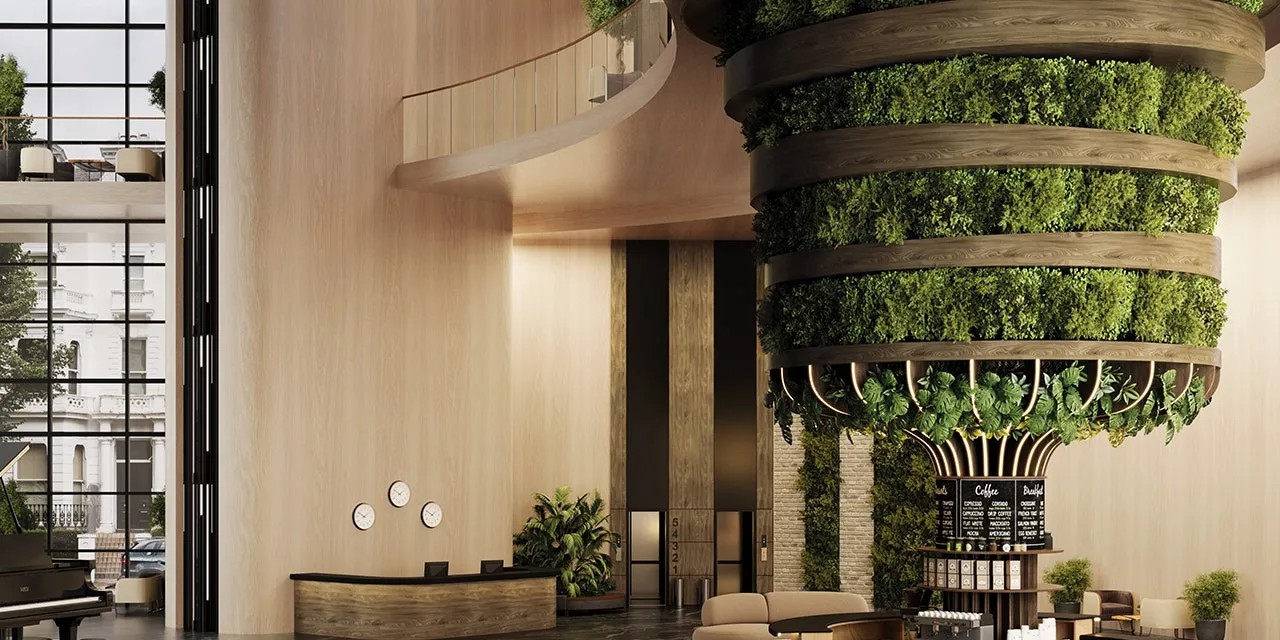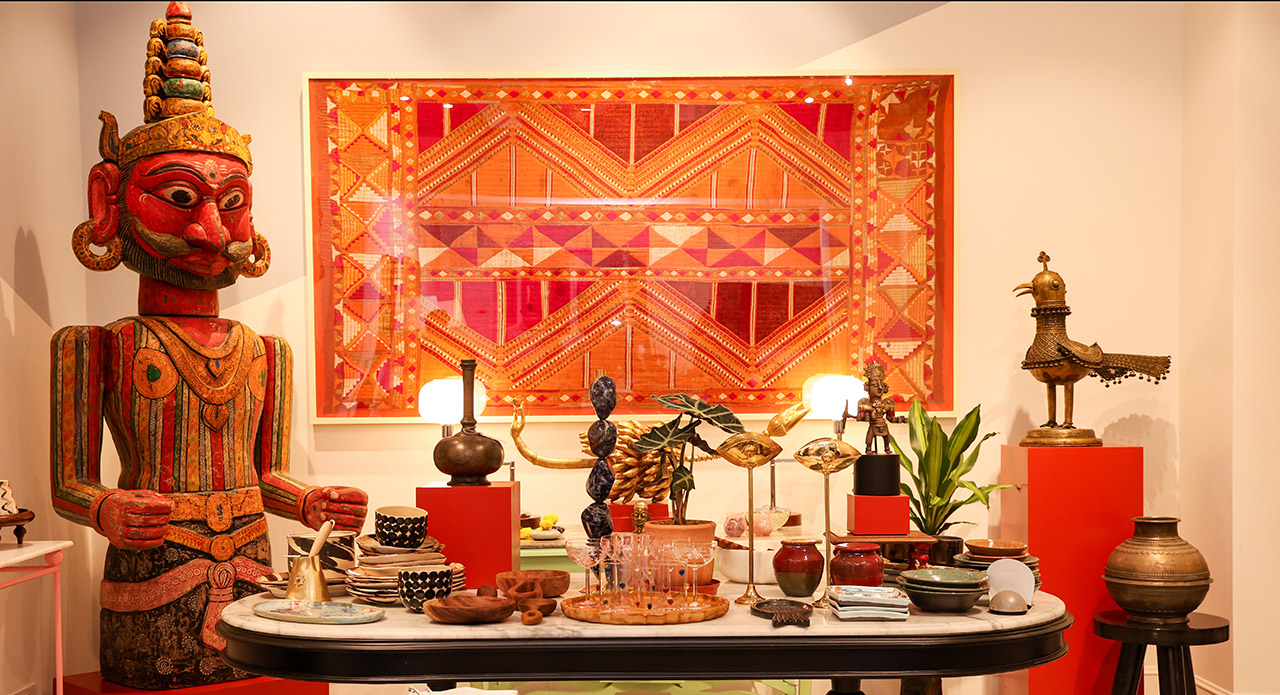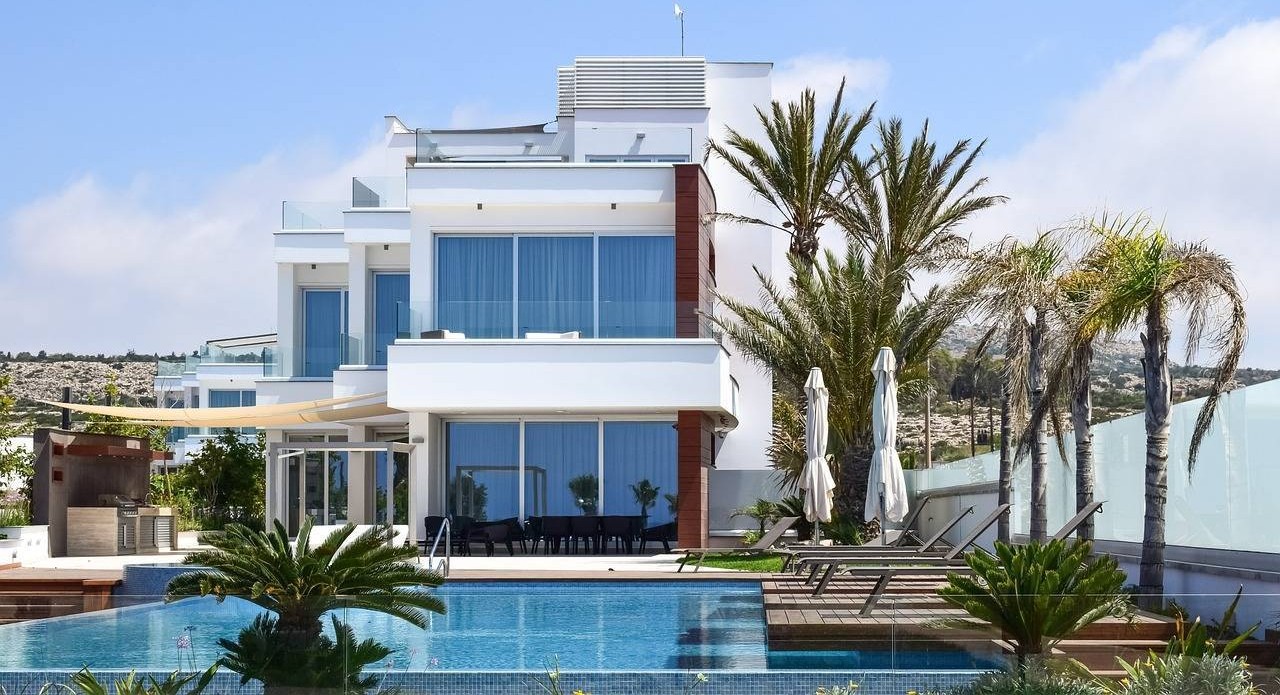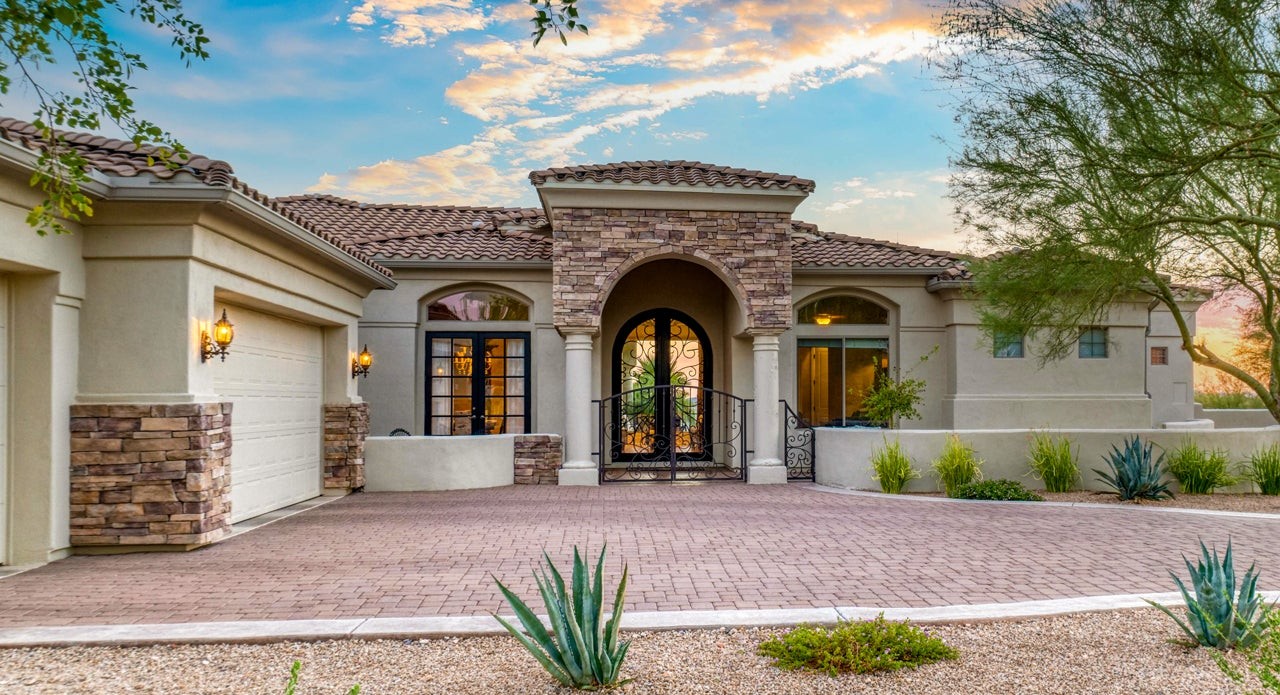In an increasingly urban world, the desire to reconnect with nature has never been stronger. Concrete cities, glowing screens and fast-paced living have left many yearning for balance and calm — a space to breathe. Enter biophilic design, a philosophy that places nature at the heart of how we build and live. The term, rooted in the Greek word biophilia meaning “love of life,” captures the human instinct to seek connection with the natural world.
Unlike fleeting design trends, biophilic design is a movement that redefines how we think about space. It is not about adding a few plants to a corner but creating environments that emulate the patterns, materials and rhythms of nature itself. Whether through daylight, greenery, natural textures or organic shapes, biophilic design invites the outdoors in, transforming interiors into sanctuaries that nurture both body and mind.
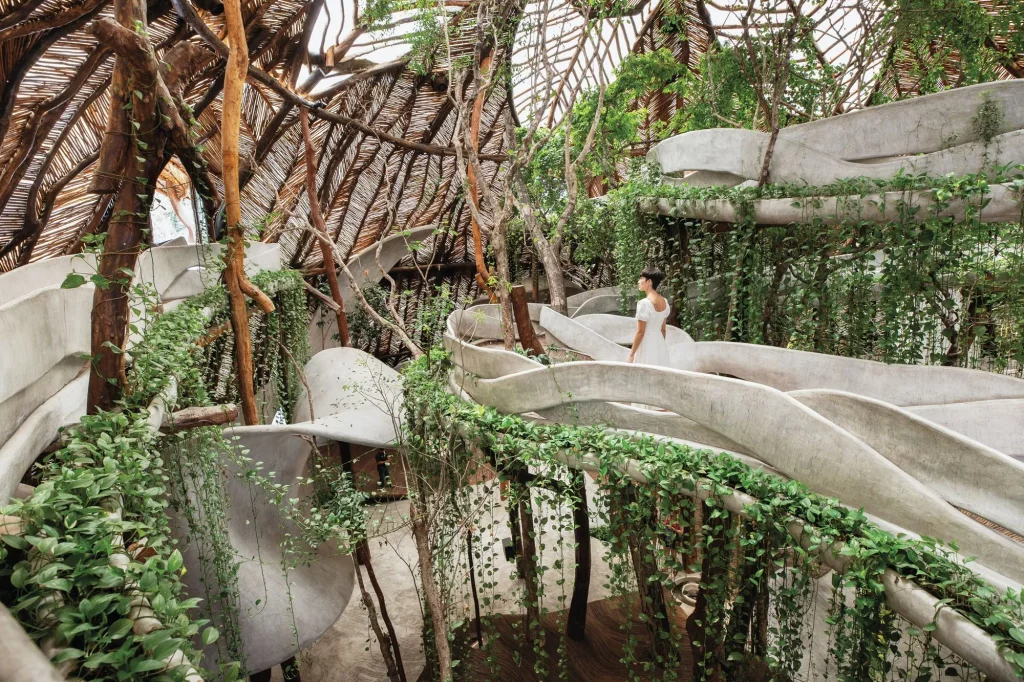
The Philosophy Behind Biophilic Design
The concept gained prominence in the 1980s through American biologist Edward O. Wilson, who proposed that humans are innately drawn to nature. Modern life, however, often isolates us from it. Biophilic design bridges that gap by weaving natural elements into built environments, restoring a sense of balance.
The philosophy is grounded in three key principles — nature in the space, nature of the space and natural analogues. The first includes direct contact with elements like plants, light, air and water. The second captures spatial qualities that mimic natural environments, such as refuge, prospect and mystery. The third focuses on materials and patterns that reflect natural forms, like stone textures, wooden grains and biomorphic shapes.
Together, these principles work to enhance our sensory experience and emotional wellbeing, reminding us that we are not separate from nature but a part of it.
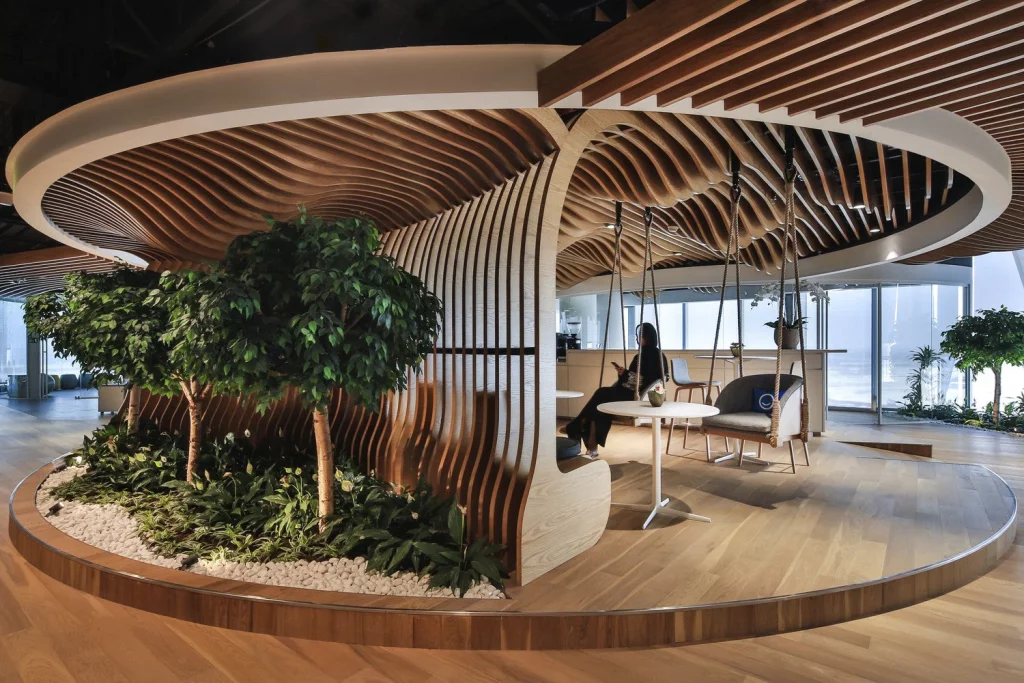
Why It Matters
Science has long supported what intuition already knows — proximity to nature improves our health and happiness. Studies show that interiors designed with natural light, greenery and organic materials can reduce stress, enhance concentration and even boost productivity. In homes, this translates into calmer, more restorative spaces. In workplaces, it fosters creativity and engagement.
The benefits extend beyond mood and performance. Biophilic design can also improve air quality, regulate temperature and reduce noise, creating environments that are not only beautiful but also healthier to live in. As climate change and urbanisation reshape the planet, design that respects and reconnects us with nature feels not just desirable but essential.
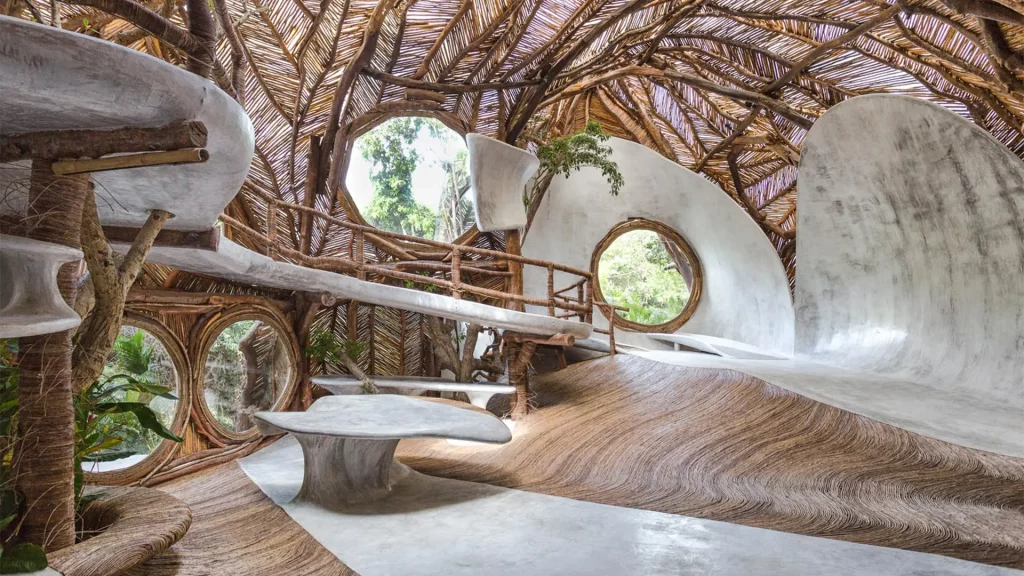
The Look and Feel of Biophilic Interiors
Biophilic spaces are defined by a subtle yet immersive sense of natural harmony. Sunlight becomes a design feature, filtering through large windows or skylights. Indoor plants — from sculptural fiddle leaf figs to hanging ferns and moss walls — bring life to interiors, softening hard lines and purifying the air.
Materials play a crucial role. Wood, stone, clay, rattan and bamboo evoke an organic authenticity that manufactured surfaces rarely achieve. Natural fabrics like linen, cotton and wool add warmth and texture. Colours are drawn from the earth and sky — greens, browns, creams, and soft blues that mirror the landscapes we find most calming.
Water features, such as small fountains or reflecting pools, add movement and sound that soothe the senses. Even artwork inspired by nature or furniture shaped with flowing, organic lines contributes to the overall atmosphere of connection and calm.
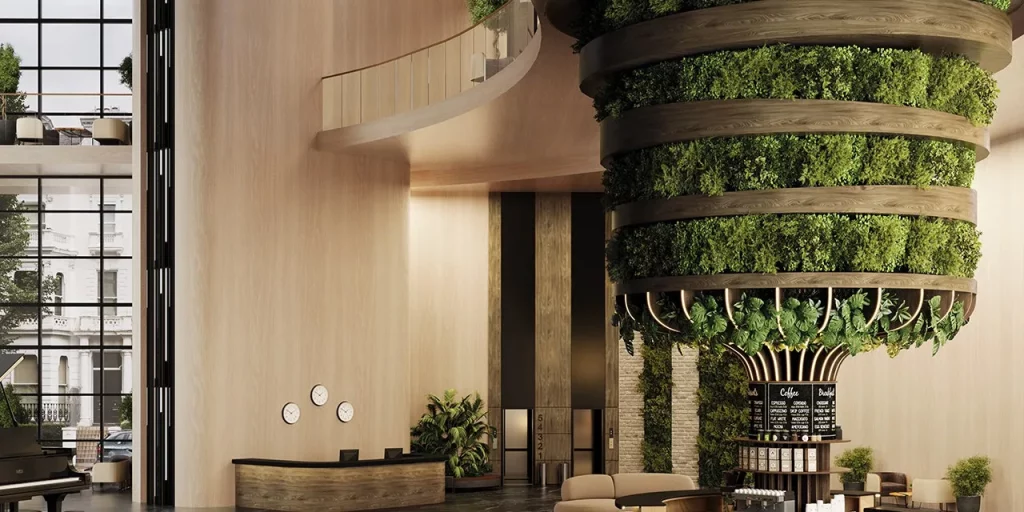
Designing with Biophilia in Mind
Creating a biophilic home does not require a total redesign. It begins with intention — finding ways to bring nature closer to everyday living. Start by maximising natural light: sheer curtains, mirrors and open layouts can make a remarkable difference. Introduce plants of varying sizes and textures, grouping them to mimic natural clusters rather than scattering them randomly.
Choose furniture made from sustainable materials and keep the colour palette soft and earthy. Incorporate tactile surfaces such as woven baskets, textured rugs and raw wood finishes. Ensure good airflow and avoid synthetic fragrances — fresh air and natural scents are the essence of biophilic living.
Finally, think beyond the visual. Biophilic design engages all the senses: the sound of trickling water, the scent of fresh herbs, the feel of linen sheets, and the sight of sunlight shifting across the floor. Each element works together to create a space that feels alive, restorative and deeply human.
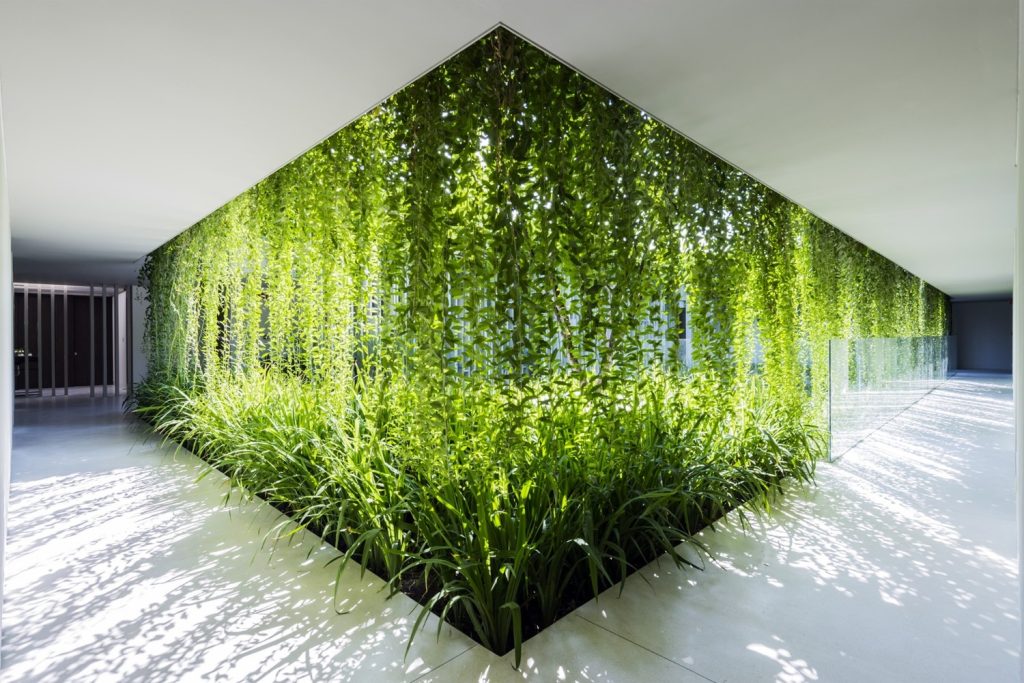
The Future is Green
Biophilic design is more than an aesthetic choice; it is a response to how we want to live in the future — sustainably, mindfully and in harmony with the natural world. As architects and designers increasingly embrace this philosophy, our cities and homes are evolving into greener, gentler places that support both people and planet.
By bringing nature indoors, biophilic design does not just beautify our spaces. It heals them. It reminds us that true comfort lies not in excess but in coexistence, and that the most inspiring interiors are those that reflect the living world around us.
